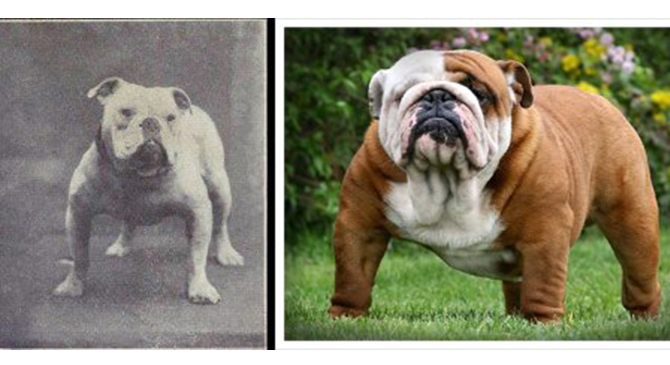As of 2013, The World Canine Organization (the largest registry of internationally accepted dog breeds), best known by its French title Fédération Cynologique Internationale or FCI, has recognized as many as 339 breeds of dogs.
The wide variety is mainly attributed to selective breeding which has influenced different dog sizes and shapes for many years. And while several dog breeds have been around for decades, they weren’t always how they look today. To perfect certain characteristics, purebred dogs underwent artificial selection imposed by humans which eventually altered their former selves resulting in many genetic disorders. For instance, Labradors are susceptible to hip dysplasia and Dalmatians are prone to deafness and kidney stones.
Caen Elegans of Dog Behavior Science has put together a collection of photographs illustrating the unfortunate effects of selective dog breeding. This is something all dog lovers need to see.
Bull Terrier
It seems incredible that at one time the Bull Terrier was a handsome, athletic dog. Somewhere along its journey to a mutated skull and thick abdomen the bull terrier also picked up a number of other maladies like supernumerary teeth and compulsive tail-chasing.

Dog Behavior Science
Basset Hound
The Basset Hound has gotten lower, has suffered changes to its rear leg structure, has excessive skin, vertebra problems, droopy eyes prone to entropion and ectropion and excessively large ears.
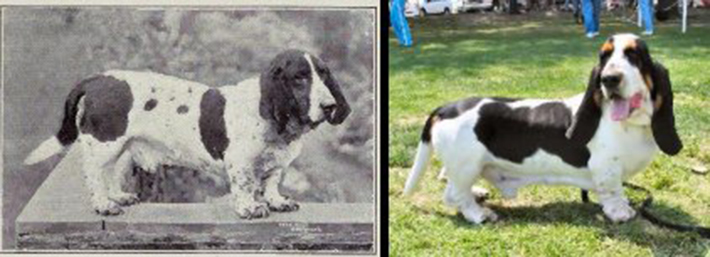
Dog Behavior Science
Boxer
A shorter face means a host of problems. The modern Boxer not only has a shorter face but the muzzle is slightly upturned. The boxer – like all bracecyphalic dogs – has difficulty controlling its temperature in hot weather, the inability to shed heat places limits on physical performance. It also has one of the highest cancer rates.
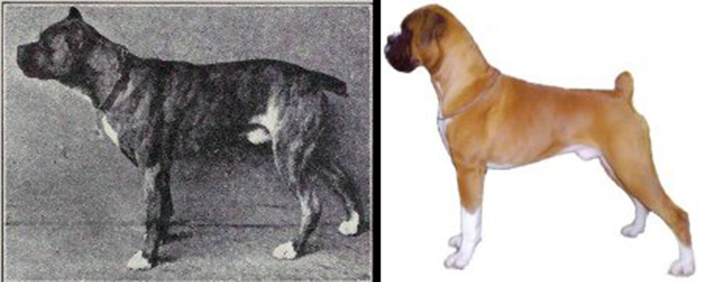
Dog Behavior Science
English Bulldog
The English bulldog has come to symbolize all that is wrong with the dog fancy and not without good reason; they suffer from almost every possible disease. A 2004 survey by the Kennel Club found that they die at the median age of 6.25 years (n=180). There really is no such thing as a healthy bulldog. The bulldog’s monstrous proportions make them virtually incapable of mating or birthing without medical intervention.
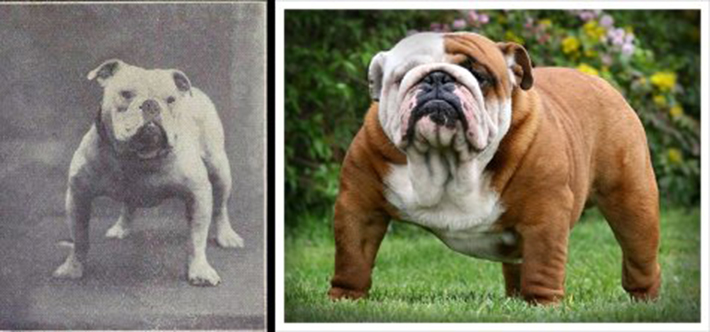
Dog Behavior Science
Dachshund
The Dachshund used to have functional legs and necks that made sense for their size. Backs and necks have gotten longer, chest jutted forward and legs have shrunk to such proportions that there is barely any clearance between the chest and floor. The Dachschund has the highest risk of any breed for intervertebral disc disease which can result in paralysis; they are also prone to achondroplastic related pathologies, PRA and problems with their legs.
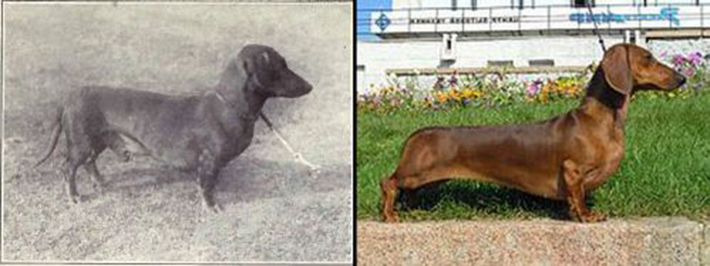
Dog Behavior Science
German Shepherd
The German Shepherd Dog is also a breed that is routinely mentioned when people talk about ruined breeds; maybe because they used to be awesome. In Dogs of All Nations, the GSD is described as a medium-sized dog (25 kg /55 lb), this is a far cry from the angulated, barrel-chested, sloping back, ataxic, 85-pounders (38 kg) we are used to seeing in the conformation ring. There was a time when the GSD could clear a 2.5 meter (8.5 ft) wall; that time is long gone.

Dog Behavior Science
Pug
The Pug is another extreme brachycephalic breed and it has all the problems associated with that trait – high blood pressure, heart problems, low oxygenation, difficulty breathing, tendency to overheat, dentition problems, and skin fold dermatitis. The highly desirable double-curl tail is actually a genetic defect, in more serious forms it leads to paralysis.
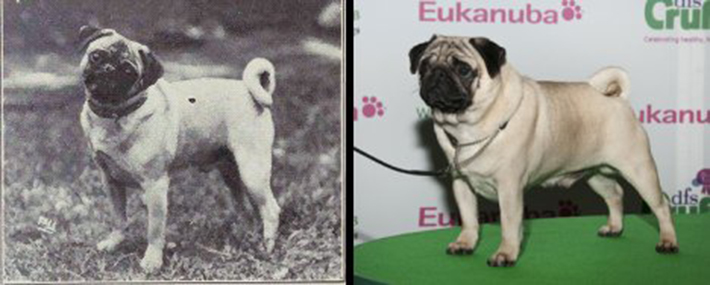
Dog Behavior Science
St. Bernard
Once a noble working dog, the modern St. Bernard has been oversized, had its faced squished in, and bred for abundant skin. You will not see this type of dog working, they can’t handle it as they quickly overheat. The diseases include entropion, ectropion, Stockard’s paralysis, hemophilia, osteosarcoma, aphakia, fibrinogen deficiency.
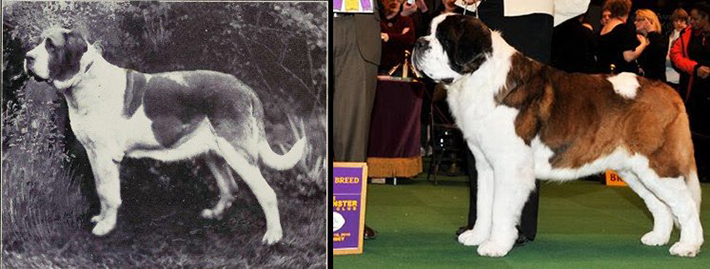
Dog Behavior Science

